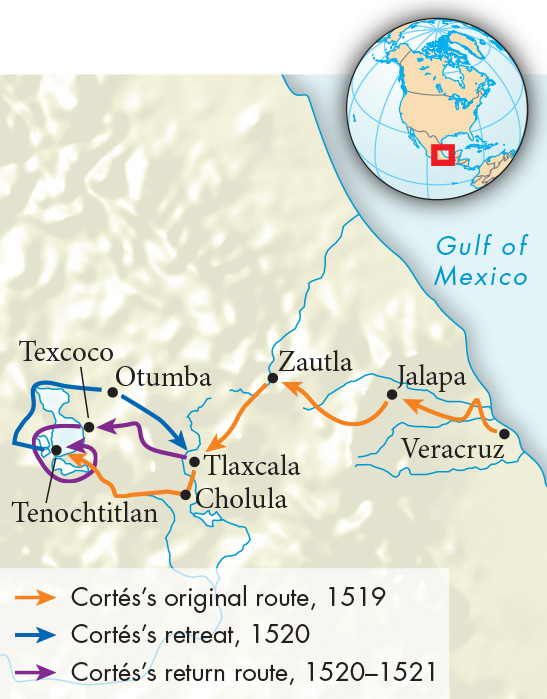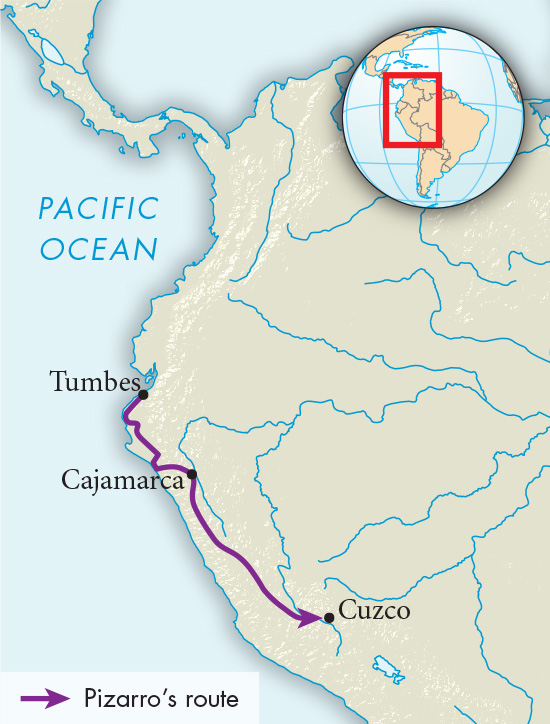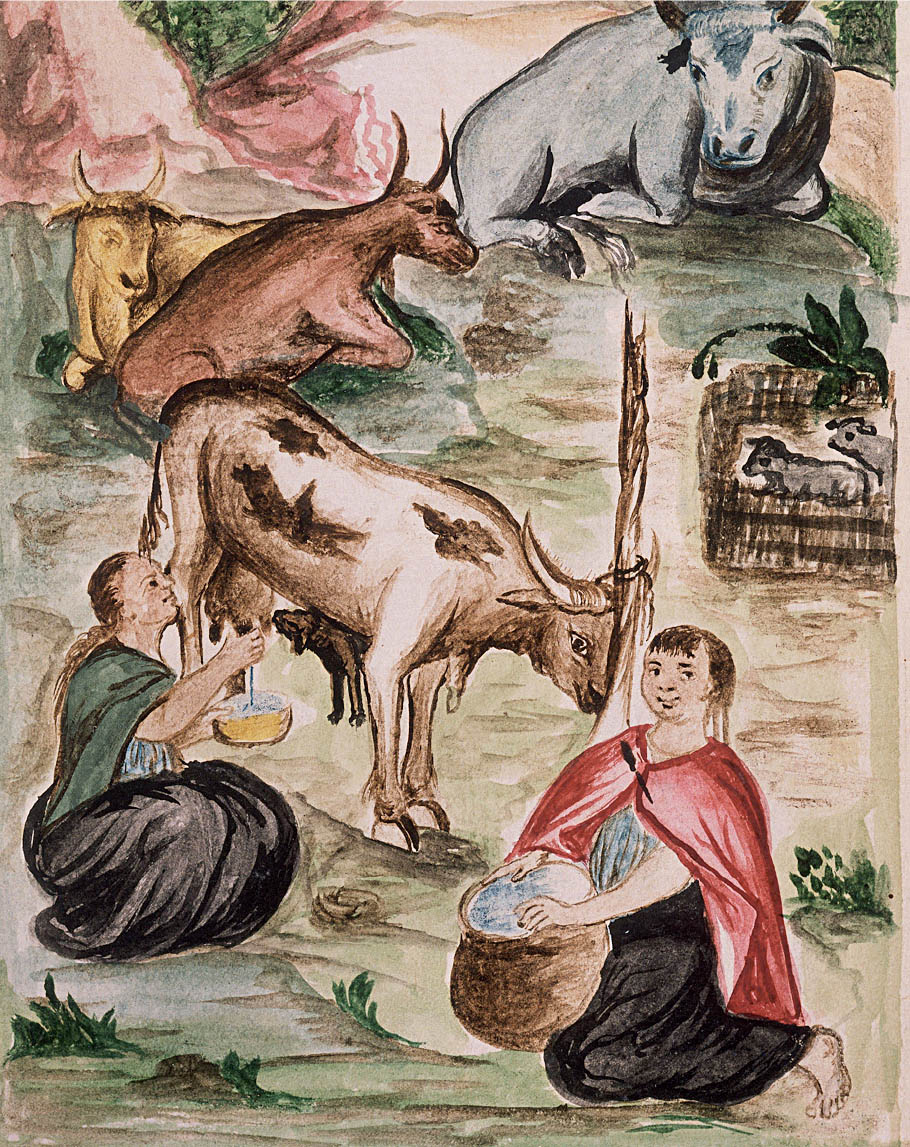A History of World Societies:
Printed Page 471
A History of World Societies Value
Edition: Printed Page 471
Spanish Conquest of the Aztec and Inca Empires
In the first two decades after Columbus's arrival in the New World, the Spanish colonized Hispaniola, Cuba, Puerto Rico, and other Caribbean islands. Based on rumors of a wealthy mainland civilization, the Spanish governor in Cuba sponsored expeditions to the Yucatán coast of the Gulf of Mexico, including one in 1519 under the command of the conquistador Hernán Cortès (1485–
The Aztec Empire, also known as the Mexica Empire, comprised the Mexica people and the peoples they had conquered, and it had grown rapidly in size and power in the early fifteenth century. At the time of the Spanish arrival, the empire was ruled by Moctezuma II (r. 1502–
Within weeks of his arrival, Cortès acquired translators who provided vital information on the empire and its weaknesses. (See “Individuals in Society: Doña Marina /

Through his interpreters, Cortès learned of strong local resentment against the Aztec Empire. The Aztec state practiced warfare against neighboring peoples to secure captives for religious sacrifices and laborers for agricultural and building projects. Once conquered, subject tribes paid continual tribute to the empire through their local chiefs. Realizing that he could exploit dissensions within the empire to his own advantage, Cortès forged an alliance with Tlaxcala (tlah-
Historians have long debated Moctezuma's response to the arrival of the Spanish. Unlike other native leaders, he refrained from attacking the Spaniards but instead welcomed Cortès and his men into Tenochtitlan. Moctezuma was apparently deeply impressed by Spanish victories and believed the Spanish were invincible. Sources written after the conquest claimed that the emperor believed Cortès was an embodiment of the god Quetzalcoatl, whose return was promised in Aztec myth.
While it is impossible to verify those claims, it is clear that Moctezuma's weak and hesitant response was disastrous. When Cortès — with incredible boldness — took Moctezuma hostage, the emperor's influence crumbled. During the ensuing attacks and counterattacks, Moctezuma was killed. The Spaniards and their allies escaped from the city suffering heavy losses. Cortès quickly began gathering forces and making new alliances against the Aztecs. In May 1521 he led a second assault on Tenochtitlan, leading an army of approximately one thousand Spanish and seventy-
The Spanish victory in late summer 1521 was hard-

More remarkable than the defeat of the Aztec Empire was the fall of the remote Inca Empire in Peru. Living in a settlement perched more than 9,800 feet above sea level, the Incas were isolated from the Mesoamerican civilization of the Aztecs. Nonetheless, they too had created a vast empire in the fifteenth century that rivaled those of the Europeans in population and complexity. The Incas' strength lay largely in their bureaucratic efficiency. They divided their empire into four major regions containing eighty provinces and twice as many districts. Officials at each level used the extensive network of roads to transmit information and orders back and forth through the empire. While the Aztecs used a system of glyphs for writing, the Incas had devised a complex system of colored and knotted cords, called khipus, for administrative bookkeeping. The empire also benefited from the use of llamas as pack animals (by contrast, no beasts of burden existed in Mesoamerica).
By the time of the Spanish invasion, however, the Inca Empire had been weakened by a civil war over succession and an epidemic of disease, possibly smallpox, spread through trade with groups in contact with Europeans. The Spanish conquistador Francisco Pizarro (ca. 1475–

Like Moctezuma in Mexico, Atahualpa was aware of the Spaniards' movements. He sent envoys to greet the Spanish and invited them to meet him in the provincial town of Cajamarca. Motivated by curiosity about the Spanish, he intended to meet with them to learn more about them and their intentions. Instead the Spaniards ambushed and captured him, extorted an enormous ransom in gold, and then executed him on trumped-
How was it possible for several hundred Spanish conquistadors to defeat powerful empires commanding large armies, vast wealth, and millions of inhabitants? Historians seeking answers to this question have emphasized a combination of factors: the boldness and audacity of conquistadors like Cortès and Pizarro; the military superiority endowed by Spanish firepower and horses; the fervent belief in a righteous Christian God imparted by the reconquista; division within the Aztec and Inca Empires that produced native allies for the Spanish; and, of course, the devastating impact of contagious diseases among the indigenous population. Ironically, the well-